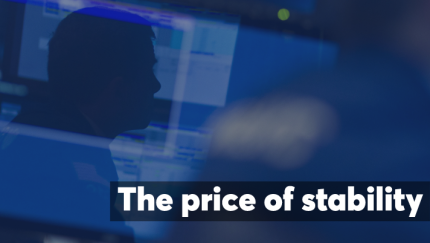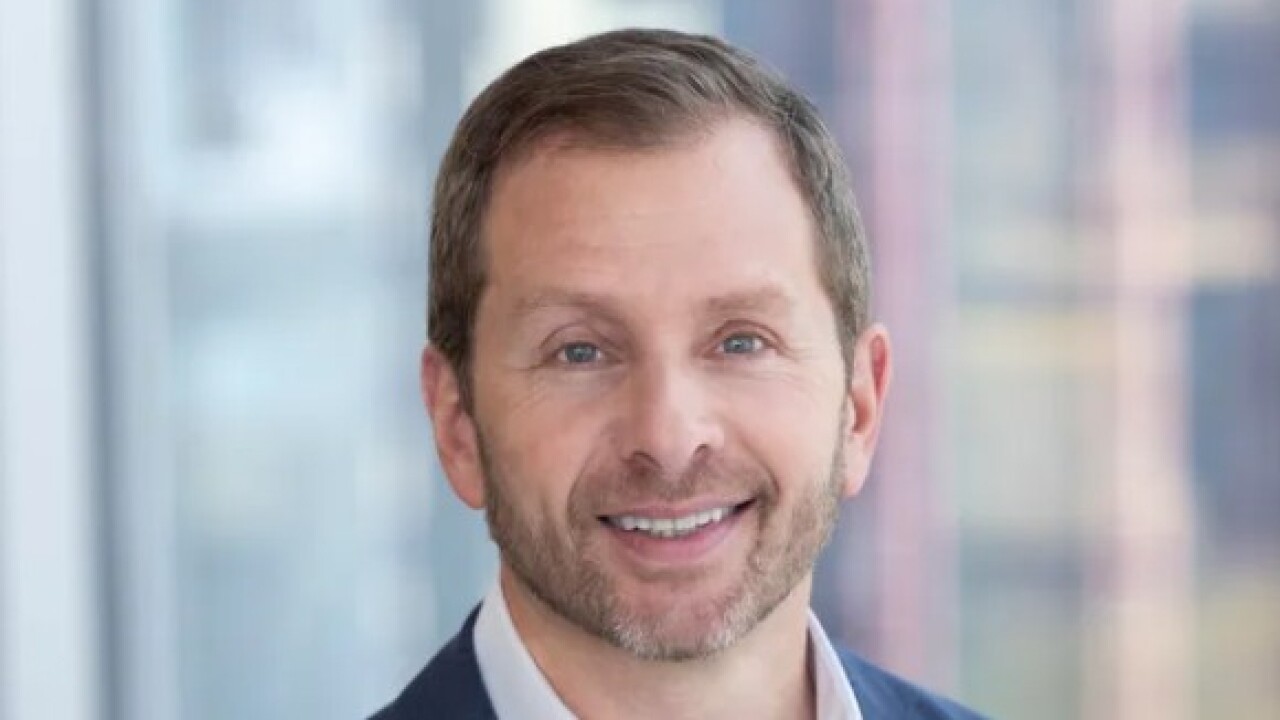The rise of automation in portfolio management and optimization exposes a flaw between managers and machines: Is the optimization process actually tied to the portfolio? And are managers really building portfolios that make investment sense?
It's a provocative pair of questions posed by Richard Michaud, founder of Boston-based New Frontier Advisors, which manages money, offers funds and also develops portfolio management software.
Michaud touts his eponymously named method as a solution, and boasts that Harry Markowitz himself tested their model, and declared in 2003 it was better than his own portfolio optimization process.

Michaud sat down with Money Management Executive to talk about the issues with modern optimization methods. An edited version of the conversation follows.
What have managers been doing wrong with asset allocation?
Good asset managers recognized a long time ago that the portfolios that come out of the optimization process really can't be used without being managed. So, what people do is they take the portfolios, they have some estimates of risk and return, then they plug it into an optimization tool, and they look at the asset allocation. If the allocation says this is crazy, I can't use this, what are you supposed to do?
Well, it must be true that, hey, I didn't quite get the returns right or the risks, right? So let me change the returns, let me change the risks, maybe even change some of the correlations between the assets, and that still doesn't look right. Well, we know that we can't have that much in emerging markets. We can't have that much in long-term Treasuries. So we constrain the solution. I call this is a "Why bother optimization." You knew what you wanted to get and you get the portfolio that you knew is the right portfolio.
And of course what I do when I make these presentations is I kid people and I say, "Why not just write it in?"
“Even the most sophisticated asset managers in the world are just engineering acceptable portfolios that pass muster for an investment policy committee.”
But there are career risks. If you go to an investment policy committee, you have to be credible with an optimization. You have to be credible in front of a client, otherwise, you're not going to be in business. So people that manage these portfolios, they create portfolios that are engineered to be acceptable.
To a very large extent that is still what everyone, even the most sophisticated asset managers in the world are doing — just engineering acceptable portfolios that pass muster for an investment policy committee or for a particular presentation or for a particular set of clients. That is what they are doing. It's not wrong, but it's not right either.
What are some of the general flaws with current optimization tools?
The Markowitz way of optimizing the portfolios is theoretically the correct answer. But when you plug data into the optimizer, that's where the problem occurs, because when you do, your computer assumes that you have 16 decimal places of accuracy in your information.
What's happening is that the optimizers are highly, highly sensitive to even the smallest change in the data you have in your inputs, and they optimize it using all of this information to create portfolios that do not make any investment sense. So, even small changes in the inputs can lead to very, very large changes in the optimized portfolio.
-
More than half of active equity products have beaten their benchmark indexes in the first quarter, JPMorgan Chase data show.
June 21 -
Private equity investors are "salivating" as they see inefficiencies to exploit in the financial advice industry.
June 21 -
Volatility has opened the door to a deeper examination of the sector in some of the most widely held funds. Plus; other industry highlights.
June 16
The other problem with that is that, well, you really don't have very much confidence in your data to 16 decimal places, and yet the optimizer could be giving you totally different answers with even small changes in your inputs. The portfolios are hard to manage. The portfolios are hard, very, very unstable, and ultimately the portfolios don't have any serious investment value and can't be used in any practical sense.
What kinds of tools are available to address these deficiencies?
Let me go from things that go wrong and why they go wrong to how to make them right - that is the patented technology that my son [Robert O. Michaud] and I invented back in 1998 and is the basis of our firm, New Frontier Advisors.
My son used simulation methods that take into account many, many different ways things can happen inconsistent with what you currently think you know. Even though you believe that stocks are going to beat bonds, the historical data is stocks beat bonds 70% of the time, while 30% of the time they're going to be wrong.
When you take into account all of the many ways things can happen that are totally consistent with your best estimates of the future, when you think about all of that uncertainty, how do you make the optimizer reflect it? That's when we used the simulation methods and we create literally thousands of scenarios based on our best estimates of risk and return, and then we use a patented technique to transform all of these different ways things can happen into an efficient frontier that did not exist before.
You're proud of that accomplishment.
Yes, but apart from that, the other thing that's most important to say is that there's actually a mathematical statistical proof that shows this procedure actually enhances investment value.
For clients who crave consistency and aren’t trying to blow the doors off, these funds are worth a look.
And while we published that in the original Harvard book [“Efficient Asset Management: A Practical Guide to Stock Portfolio Optimization and Asset Allocation”], what is also worth noting is Harry Markowitz came along and he's, of course, the inventor of Markowitz Optimization and more, and he was interested to know whether our procedure is better than his. So he did some tests and he was willing to say, in print, that the Michaud optimization beats Markowitz. We expect less and get more in the investment period.
And these are what are called simulations, and these are mathematically rigorous ways of showing that one procedure can actually work better than the other. So even the world's authority has said this after testing what we do. This is basically why everybody isn't doing as well.
How does your tool work when it comes to accounting for uncertainty?
Well, New Frontier is not only a software, global software provider, we actually manage money with our technology. What we offer to clients is professional management with superior technology, and that is what we would do here. We would pay attention to what's going in the Federal Reserve. We would be paying attention to what's going on at the central banks. We would pay attention to what's going on in many emerging markets like Brazil and, of course, we need to pay attention to a whole range of issues that come up like the ones that you're talking about in terms of commodities and oil prices and so on.
But what we do is use our best estimates of how to think in terms of risk return estimates for various asset classes, and we do use ETFs for our strategies, since we're a specialist in ETFs here. It's what we care about; what a good optimizer should do is help you do a better job of risk management. And how the portfolios look is that they are much better diversified than what you would get with a traditional approach to portfolio optimization or even a process where you're trained to manage the portfolios.
The optimized portfolios with Michaud optimization are extremely well diversified, and they take into account all of the relationships between many different kinds of indices and so on. The portfolios tend to be much more reliable and stable across time, which is what we have been able to show in actual practice.
How does the Michaud optimizer solve for this exactly?
I'll tell you how we do it. We have statistical methods for estimation. Some are advanced statistical methods for estimating risk and returns. We are specialists in modern statistics applied to finance.
“What a good optimizer should do is help you do a better job of risk management.”
We also pay a lot of attention to financial theory in terms of the structure of global capital markets and risk premiums and so on, but we also pay attention to how data changes and how today's data might be different from yesterday's or perhaps last week's data. And we re-estimate our risk and return estimates based on how things have changed, and we do this once a week.
But what is unique about us is that we have this rebalancing tool. Now how do people generally rebalance a portfolio? Well, what they do is they do it once a quarter, once a month, some kind of calendar basis. That's the way in which many, many institutions decide to change the portfolio. Of course, some people do it every three seconds. Those are the high frequency traders and so on. Some deep value managers might not want to ever trade more than once a year. So it depends on the kind of strategy you have.
What we have is a core multi-asset ETF strategy. So in the context of being a core strategy, we're not likely to want to trade too terribly often across the year.
The other way in which people trade has to do what's called range rules. You have some kind of range around the bond asset or the stock asset or whatever, and if the allocation ranges outside of some range, then you say, well, I've got to change that, change the portfolio.
That's problematic in your view?
Well, neither of these two methods are portfolio based, neither of these two methods have any financial theory behind them. You're not really paying attention to the portfolio; you're just paying attention to a rule that is purely an ad hoc, not financially grounded nor grounded in financial theory.
What we came up with is truly unique. What we have is a need to trade probability associated with the portfolio, and the concept here is both simple and not. The concept here simply is: Is the portfolio you currently own statistically similar to the portfolio you currently think is now optimal?
If the portfolio you think is currently optimal is statistically similar to the one you currently own, don't trade. You'd be trading in noise. If, on the other hand, the two portfolios are statistically dissimilar, then you probably want to consider trading the old portfolio towards the new one.
And having a need to trade probability has to do with one of the most important innovations of New Frontier Advisors. It's a procedure that allows us to decide to trade tomorrow or six months from now but not on a calendar basis on any particular day in fact.
So it isn't calendar based, it isn't range based, it is portfolio based and takes into account the entire portfolio relative to the currently new optimal portfolio. Our particular strategy is we tend to trade not much more than three times a year. But we trade when the data tells us to trade. It's one of the most important things and the reason for the success that we have had for well over 12 years managing ETF portfolios.






